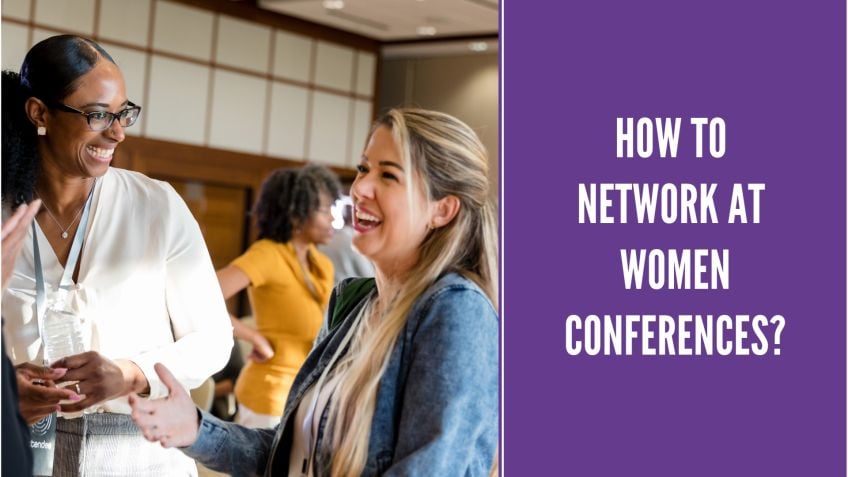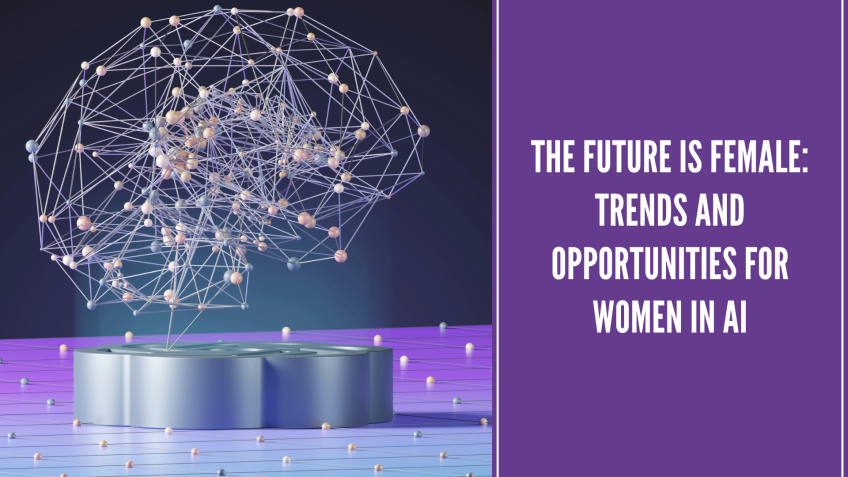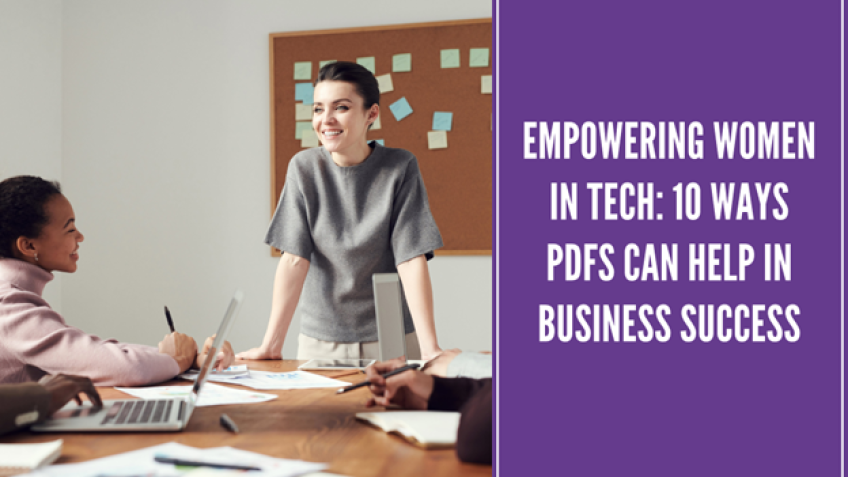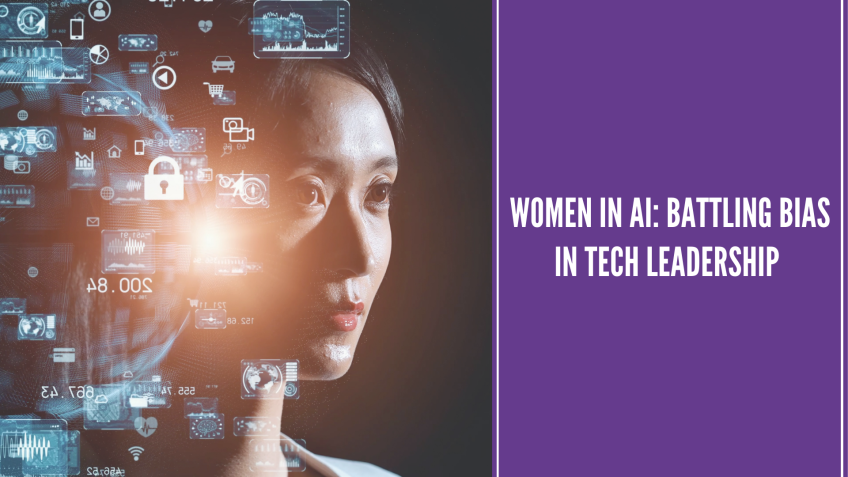It's time. How to start promoting gender equality and increase your brand value by Viktorija Pajarske
Promoting Gender Equality in Your Company: A Strategic Approach
In today's corporate world, discussing gender equality is paramount. The more diverse your team is, the more views and solutions you have in dealing with issues. However, the approach can often be too serious and boring. Today, we'll discuss the topic from a unique perspective while sharing personal stories to keep things interesting and less serious.
The Lobster Story and Its Relevance to Diversity
When sharing her personal gender equality promotion experience, Victoria, tech industry veteran with over a decade's experience in the sector and current Leader of the Marketing Team at Kernis management cost optimization platform, began with a tale from her childhood called "the lobster story". Highlighting the notion that it takes just one unique and different individual to trigger a wave of interest and change, she likened this concept to the gender equality in the company's environment. The idea is about showing that even in unlikely places, real talents can be discovered, just as she discovered a lobster in a river.
Her Experience in the Tech Industry
Victoria presents a unique perspective on the gender divide in the tech industry, sharing how she achieved a 50/50 gender balance within a marketing team in a typically male-dominated sector. She shared that it's a significant challenge to convince women to step into roles in industries that are considered more masculine, such as cybersecurity or cloud computing.
Tackling the Glass Ceiling
Victoria's discussion underlined a prevailing issue in the corporate world: the glass ceiling. Regardless of progress, the higher the ladder, the fewer women are present. According to Victoria, the belief that women can't think strategically is one of the biggest gaps within organizations. The assumption, often subconsciously made, can hinder women's progress, particularly to C-level positions.
Promoting Gender Equality: A To-Do List
In aligning with Victoria's personal experiences and beliefs, the following steps are suggested to start a diversity program and promote gender equality:
- Identify the sponsors within your organization: Find those who care about this cause and convince those who don't yet see its importance.
- Set key performance indicators (KPIs): By setting measurable and results-focused KPIs, you can track and analyze your diversification progress.
- Investigate current efforts: Before implementing your own measures, appreciate ongoing initiatives and understand how you can improve them.
- Communicate the plan: Feedback to sponsors and stakeholders on how to implement and ensure everyone is in alignment with the plan.
Ultimately, the goal is to bring everyone on the same page and create a harmonious and diverse work environment. It's also crucial for organizations to look beyond mainstream recruitment channels to build their diverse teams.
Time to Start
Rather than ending with a closing note, Victoria encourages everyone to start implementing what has been discussed. Promoting gender equality within an organization doesn't only benefit the individuals but also the company's growth, revenues, and brand messaging. Start the conversation, initiate the process, and let's contribute to building a truly equal and inclusive world.
We're hiring
If you're a strong executive passionate about gender equality, diversity, and making a difference, Victoria’s tech company, Kernis, is hiring. They want you on their team to contribute to their growth and foster diversity and inclusion.
Video Transcription
First of all, uh we will probably during this conference, we will look at this topic from a, from a different angles uh from a different perspective. But we, we all discussing the same problem. So I prepare the simple, simple recipe.Everyone can, can start to implement what if they want to promote, start promoting the, the gender equality uh inside the company, but not to make it uh really, really, you know, serious and uh boring. I decided that this time, uh I will share three personal stories with you.
Uh just, you know, to, to make it uh make it less, less uh serious. So, first story I want to share with you uh is about the lobster. So that's my lobster story. So yesterday with my team, we actually went kayaking. Uh I fell out a couple of times. I'm, I'm actually in, in, in a bit of pain, but that, that reminded me about my childhood lobster story. So w when I was at school, uh I was tw 12 years old uh in Lithuania. That's the country uh that uh that I grew up uh in, in Lithuania, they started selling live lobsters in the supermarkets. It was something around €1 1.5 dollar at the time. So I went there and I bought one with, with no intention to cook it, no intention to kill it. But then I, then I was like, you know, looking at that lobster in the, in the, in the plastic container and thinking, ok, what I should do with it with it now, I have a lobster. It's life. I don't have an aquarium at home. So I went to the, to the, to the little river river next to my, next to my home and I let it go, I just let it go into the river. I set it free.
So the next day I'm going to school and I'm seeing around 20 fisherman that f this is the real story, 20 fishermen around that number is, is, is standing on the shore to that next to the little river, but I never seen them before. So I'm asking them, OK, what folks, what are you doing here? And they say, you know, in this river there are lobsters. So high lobsters, I think uh in this conference we all, all those th those magical lobsters that, that we want to show that it, it takes only one to prove that it's worth to look into this, you know, smaller river. Uh So that was my first personal story and I uh I would like to go to the agenda. Do you have any comments? Uh No, not yet. OK. Uh Prob probably let's move uh move forward. So, hi again, I'm Victoria. I have more than 10 years experience in, in the tech industry. Uh Currently, I'm leading tech marketing team uh at the Kernis uh management cost optimization platform uh called Cast A I, I joined the, I joined the company almost at the beginning. So I had the pleasure to build a team from, from, from the ground up. Uh I was the first hire in marketing and currently uh we achieve the 5050 gender balance in, in inside the marketing team.
And before you say that it's easy, it's marketing, it's not the engineering role. I would like to, I would like to say no, it's not. It's extremely difficult if you're working in the industry, for example, cybersecurity or cloud or any anything that is considered more masculine industry.
So that the major issues is that the women in themselves don't believe that they can, they can go there and do a great work. And usually uh it's, it's the problem of, of uh not looking into for, for us. It's the problem for the organization is not looking for, for someone to join in the right places. So for example, just a few days ago, we, we discussed uh uh with what one company, uh let's say it's uh accessories industry that they, they cannot find c level executives to join them. Although the industry. It's, it's, it's uh it's mainstream anyone can work there, woman man doesn't matter. Uh And I asked, you know that my question was how you are looking for the employees. Are you going to the same tech forums? You're going to the same tech communities that are known that they, they are not representing women really well. So how can we hire more? They were steam we need to look beyond the look beyond the uh mainstream casual tech channels where, where, where we see that the biggest representation are from, from the, from the men perspective. So I was really, really lucky enough.
Uh because uh my colleague, uh head of hr and co founder at Cast A I uh came not from the technical background. So she was always looking for the people for, for their skills around and not only in the tech industry, that's how she helped me to, to, to build the, the diverse team. That's, that's one of the most important important lessons just to look beyond the, the the casual channels if you want to have a diverse team. And uh another thing, uh we need to reduce biases. Uh That's uh sounds, sounds easier than, than done. And sometimes we as women, even ourselves, we have some biases. For example, if the role inside the team is technical, uh we, we also start to think that, oh maybe I will not find anyone. So we just need to look at the person as it is without justifying uh them on the, on, on the gender, but justifying them based on skills basic, but sometimes it's harder, harder to do than, than, than said. Um And let's move forward then to, to the next uh slide. Uh By the way, I, I promised to share 33 personal stories. So, so I will, I will still have to, to share.
So today's agenda really quickly, uh I want to go through the simple recipe of how can you start the diversity program and how to start promote gender equality. And the most important thing, I guess it's convincing the still stakeholders. So for example, if you go on the Slack Channel and you say, you know, you just post anything on the Slack Channel and saying, oh, our company does not do well with the, with presenting the diversity. We don't have a diverse team here. It's, it's the, it's the problem but you will not achieve anything. Usually you will just uh ignite the difficult discussion uh and unnecessary noise. You need to align the ecosystem, the, the sponsor's ecosystem. If you want to start promoting that, that and if you want to start implementing that, so it takes some time of planning, but it's absolutely worth it. So I will, I will share the to do list uh later on uh moving forward. Then uh this is the, the problem that we all see. But I, I, and we we are all aware about it. Uh Everyone uh who is probably watching this session is aware about the problem of the glass ceiling we we discussing so often about, but I, I decided to visualize it and when I visualize it in, in, in this uh in the slide, it, it, I actually felt it.
So for example, uh there is a statement, I believe that women can work in tech. We kind of, you know, moving forward, we we already solve part of the problem and a lot of companies and organizations are actually believe that you are good enough being a woman to work in that. OK. Thank God. Finally. So then the next step, I believe you can be a team leader. Usually there, there is some some problems there is there's less women team as a team leaders. But still we, we already convinced, you know, the the industry that we can be a good team leaders and the the the more high you go uh to through the, the more higher you climb through through this scale, the harder it is to achieve uh something because in the sea level, the industry that the average uh in the US is we only see 20% of women be being in the sea level positions and it's even less in, in a, in a certain industries in a certain tech industry that are considered considered to be more hardcore like uh you know, hardware cloud anything that is, that, that, that requires some something that uh that, that is uh understood as super technical.
So, and I think that the major major thing is some people still not, not believe that women can think strategically. Because promoting someone to the, to the board, promoting someone to the cao level sea level means that you believe that someone can think strategically. And I think that's the, the the one of the biggest gaps inside the, the organizations, we believe that we can have a soft skills. We believe that we, they can run teams that they can take responsibility for KPIS. But that, that step that they can actually own and run a business without so called, you know, emotions or, or anything around it. It's, it's still not, it's still not uh not solved. So to do list. So what, what we should do, by the way, I wanted to share a personal story. Really interesting when I was um one of the, my first uh jobs, I was uh uh building the books dis distribution uh platform together with the team in Lithuania. We were really early s at the same time as uh uh uh at a similar time as Amazon was, was, was growing, of course, in the UN. It's a different, different business uh um context. Yeah. And uh I was young, 20 years old. So we hired uh a man who had zero understanding about the industry and we rented him a Jeep, you know the, the cool black Jeep car. So we were, he was always driving. I was sitting at the passenger seat, we are going to the business meetings.
I do the talking. I signed a contract. Uh he smiles and we go back and that lasted for a year. Uh and, and I, I didn't see any problem. I was, again, I was 23 years old. I was happy to even have this possibility. But then one of the uh one of the managers of, of, of, of the bookstore um of, I don't remember it was a supermarket or, or, or what asked, uh asked me, why are you keep dragging this dude together with you? He does not talk, he does not do business. Why you keep coming together. And uh and I just sat there and like, I didn't have an answer. So that was my 1st 1st understanding that there is something that is called glass ceiling. You know, there is something, something really, really, really wrong. Uh So I hope I, I think, I think you all have similar stories but I just wanted to share. Uh So agenda first, the most important part is to identify, identify the sponsors uh inside the inside the organization.
So identifying the sponsors, meaning that identifying the network of people who actually cares about the problem and, and, and, and if they don't care yet, we need to convince them and it could not be only the human resources manager or head of human resources. You should involve everyone.
You should involve legal. You should involve marketing. And if you can get CEO, if uh if it's a woman led organization, maybe it's going to be easier. If it's not, if you can get CEO on the board, then uh then you can take the CEO together with you and build a sponsor's network. And uh uh here I prepared some, some tips how to convince different stakeholders that it's important to, to include some actions in, in, in the road map for the next year. So for example mckinsey did the, did the research uh a few years ago and they found out that um the, the, the, the companies that are more diverse usually are more profitable. That's the, that's the cold facts. Also, they found, found, found out that, um, but the, the both companies that uh are, have, have diversity, higher, higher ratings of diversity, have higher uh revenues. So moving on to the next stake holder. So, OK, let's assume you convince the CEO of the company because CEO cares about the revenue, CEO cares about his people but cares about his revenue. Let's not, let's not fool ourselves.
So, uh by fooling ourselves as business uh for focuses on uh generating revenue, it's not an NGO so the revenue or, or the, or the, or the faster growth if you promise to the CEO that, that's how you will get the investment into the, into the programs. So again, if you need to convince the Chief Marketing Officer or VP of Marketing, you don't need to convince me. But uh I mean that then you can show them this graph from the Deloitte research that, that, that is saying that younger generation cares about the diversity, they cares about the brands and how they communicate and how they are um uh including the diversity topic in their marketing.
And this means money. Again, this means uh uh faster growth, this means bigger revenues, this means more relevancy to the, to the younger audiences. And if you need to convince uh public relations manager or human resources manager, uh there are multiple awards now and start of shows and uh conferences that are looking uh for the diverse speakers, they are looking for the diverse companies. And that, that became uh that actually adds a score. Is it fair? Of course, it's fair. Of course, it's fair. Otherwise we will keep doing what we're doing uh and keep getting the same result. So this is your ticket to, to, to, to uh to present your company in, in, in, in that light. So next, uh so as you see, we, we, we convinced CEO, we convinced Chief Marketing Officer, we convinced Human Resources Officer. So what, what are we doing now? So we need to set uh KPIS key performance index. Uh And this is really, really interesting. Mm This graph again from the Deloitte, research shows that the companies that are growing faster usually already have those uh uh KPIS in place. So you can see the strategic topics here uh where uh what you can measure uh in terms of diversity, you can measure, measure diversity in the hiring, hiring objectives, uh talent retention objectives, you can hire it again in revenues or brand messaging. Uh And this is really important.
And by setting up PPIs and aligning sponsors, there is 11 thing that we keep forgetting, I keep forgetting, not only as a uh as a diversity promoters, we keep forgetting as professionals. Usually, we assume that nothing was done before. That's the uh most evil assumption you can make about something inside the organization. Meaning that first, uh when you're going to talk with the stakeholders, you need to ask what are we doing now to, to promote diversity, how we are including uh women, people of color, color, uh people who, who, who for example, more in introverts than extra, how we including them.
How, how, how does it, how does it work? And you will usually you will get, get the, get the answer. Usually there's something, something is already already happening, especially in the human resources department and marketing. What you need to do, you need to investigate, you need to come up with a plan and you need to agree on the on uh on the improvements on the program. Maybe if it's not, not working, maybe the KPIS are not, right. Maybe someone is not not, maybe it's not included in the market and road map. Maybe it's not included. Um, you know, anywhere it, we, we should, we should, uh, make sure it, it is actually, that's what, what, what, what I was talking about, it is actually actually included, it is actually added to the ors it is actually added to the product development road map. If you, for example, we want to make some changes in the UI uh or for, for, for women or for, for the people who, who have um uh weaker vision, anything, you know. Uh And, and that's, that's the, the most important part. So we already discussed that aligning the sponsors uh investigating what, what, what, what was done uh setting the right KPIS uh right, goals and communicating the plan back to sponsors and saying, hey, we all have an agreement. That's great.
Let's let's go do it that that's the most, most, most important things. So instead of, instead of thank you, I just want to say, let's, let's just start. Thank you. We don't have time for the Q and A uh session.
Yeah, but thank you so much for this fantastic presentation. I particularly like the way you demonstrated how to convince your uh CMO and how to talk to your Hr and Pr Department. I think it's very useful, especially considering the diversity of their KPIS. And then you need to kind of know what the trigger to pull and how to, to demonstrate the value because we all care about uh gender equality who work intact. But we want just to make sure that it also aligns with our Kpis. So thank you so much Victoria for this great presentation. I did really enjoy it. Thank, let's thank Victoria in the chat. I see people already clapping uh giving you a round of applause, which is great. Thank you very much and stay with us for the rest of the event. Stay with us and connect with people. I'm sure many people would want to have one on one also chat with you.
So and also we are hiring, we are hiring, we need strong executives. We are hiring, we, we, we will, we will do great together. So,
yeah, absolutely. Thank you. Thank you very much. Bye bye.





